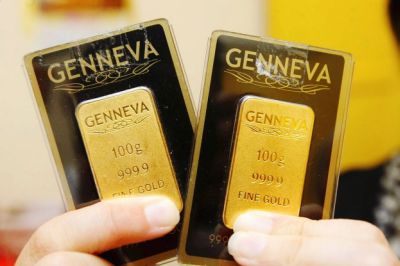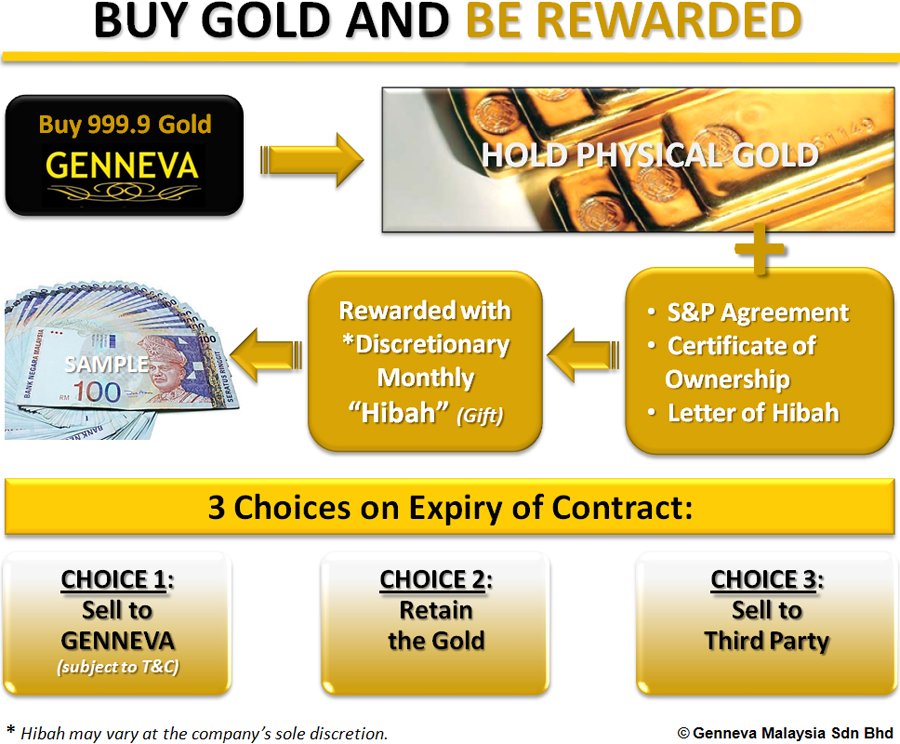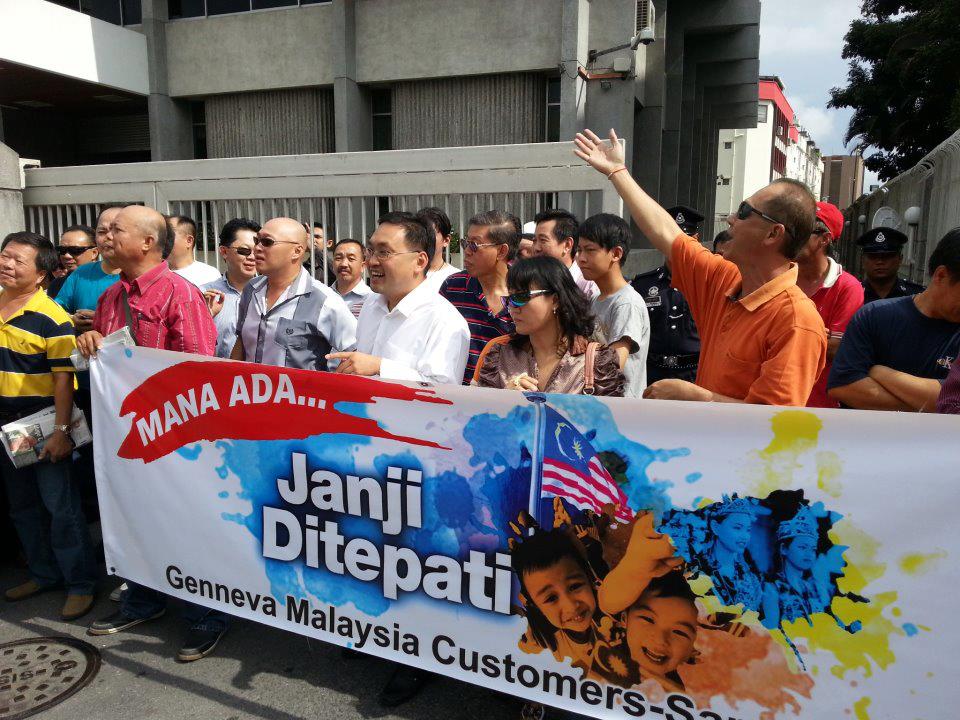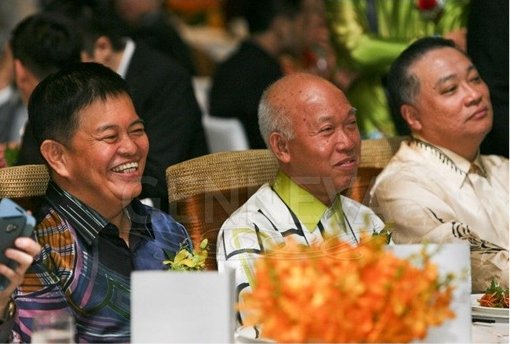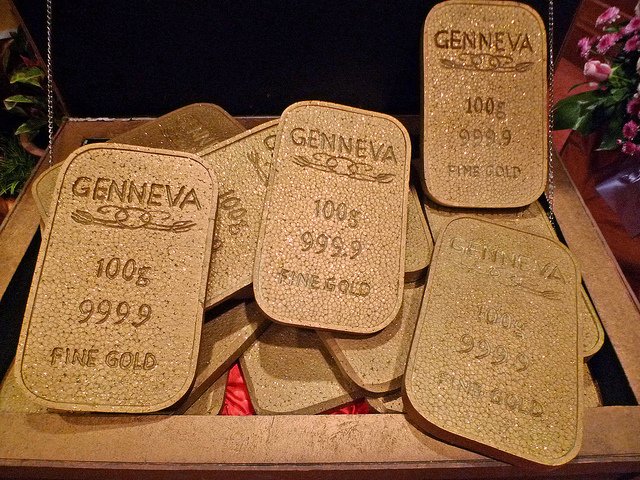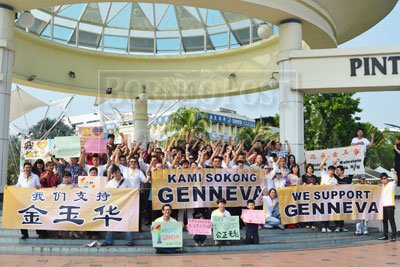
According to national news, Genneva had amassed some RM 3 billion but apparently only RM 1 million was found in all the accounts. It looked like the other 2.99 billion has taken flight but no one knows where or how.
If a Ponzi scheme could take place in America sight unseen and knowledge unknown, it shouldn’t be a surprise that in Malaysia, something similar could occur right under our noses. Given that certain top politicians might have given their nod, anything is possible. Moreover with public greed, no one would check properly, which is the cornerstone of the story of Genneva.
Guaranteed returns
Contrary to what others thought, Genneva smelled like a Ponzi scheme right from the beginning but unfortunately too many people were too centred on wanting to get rich and therefore dropped their guard. That’s how these things operate with impunity in this country – simply that most people don’t care until it hits them hard.
Every investor who supposedly invests in Genneva would get a 2 % guaranteed return per month in the form of “Hibah” or “Gift” for the next three months. This was the preferred terminology because calling it ‘interest’ or any such equivalent was deemed illegal. This investment is considered a ‘loan’ to Genneva where they then provide you with partial collateral using gold and an interest rate of 2 % per month.
The consultant who successfully recommends Genneva to anyone gets 0.6 % per month of the ‘loan’ amount or even more, depending on the tier he is at – whereupon all consultants are placed in some form of pyramid-like commission structure similar to schemes pioneered by Amway. Beginning at 0.6 % per month, it also includes another 0.2 % for the ‘Senior Consultant’ and a further 0.2 % for the ‘Group Leader,’ totalling 1 % as the overriding commission for the ‘loan’ they manage to attain for the company.
Firstly Genneva would utilise the ‘loan’ to purchase gold bullion, which is cast with their name and then certified by an NGO (such as Gold Bullion Association of Malaysia) to signify that they – and not the investor – had actually established themselves. For this, no one knows the actual purity of the gold you will receive unless you decide to melt the entire bullion and analyse it. Even so, the collateral given to you is never in full; the snag being that in order to participate in Genneva’s scheme, you the investor must then purchase the gold bullion at 30 % higher than the market price.
The lure of promised paybacks
If you leave the ‘loan’ with Genneva for the next 12 months, they will pay out 24 % in total back to you with an additional 12 % to the consultants who fit into the pyramid that successfully referred you to them. That totals 36 % payback for each subsequent year. If we assume the company purchases gold bullion at the prevailing market rates, they will still stand to lose 6 % for every such ‘loan’ made to them – 100 % cost of gold + 30 % mark-up – 36% interest equals -6 %.
And so the question is how or what Genneva needs to do to make up for the yearly loss of 6 %. By then their total ‘loan’ intakes had amounted to RM 3 billion, which means the interest payouts were working out to RM 180 million annually. That’s where Genneva resorted to a combination of scams going by the names of ‘Factional Scam,’ ‘Ponzi Scam’ and something as dubiously named as ‘Tai Chi Tactic.’
To elevate Genneva to the ‘big boy’ stakes, they went on a huge recruitment and exposure campaign, not only sponsoring sporting events but also bought out Datok-ship titles from Indonesia and/or Brunei, hosted lavish annual dinners, extravagant lucky draws, glittering conferences and seminars. Once they have attained the maximum requirement amount of investment, the second stage of their plan kicked in – that’s where the real game began.
One scam after another
‘Factional Scam’ begins with the purity of the gold bullions downgraded over time. At RM 200 per gram for 99.99 gold, each 100 grams will cost RM 20,000, which is what the first gold bullions are worth. By reducing the purity to 95 %, the worth of gold would drop to RM 19,000 although you will still be paying RM 23,000, because of the stipulated 30 % mark-up.
In case they got into trouble down the line, the directors of Genneva decided to form their own NGO and called it Gold Bullion Association of Malaysia (GBAM). Their task is to issue certification and quality assurance in case anyone amongst the public decides they want the gold certified and checked for quality.
The problem at this stage is that nowhere in Malaysia is gold regulated and therefore no one could actually say they were doing anything wrong or illegal even if anyone were to find the gold to be lacking in actual quality. But to ensure that the whole scenario was legitimate in order to buy public confidence, GBAM was established purely to hoodwink everyone into believing them entirely. In other words they had their backs covered to prevent the scam from surfacing.
Next came the ‘Ponzi Scam.’ This is where Genneva managed their own little bubble economy. Over time, the directors knew that after they have cooked their books, they had to hide them in order to ‘honour’ the investors with their interest payments. However since they really don’t have the RM 180 million to do so, they decided to issue ‘coupons’ for their gold, which stated that upon the expiry of the three-month contract signed with Genneva, you the investor will receive the gold bullion as promised. But hardly a few days thereafter, they tell you that you need to return the gold bullion to facilitate the renewal of the contract in which case then you are required to wait a further two months or so before you could even get your hands on a supposedly ‘new’ bullion.
Getting caught in a loop
At that point in time, since you have already paid the 30 % mark-up, there is no sense in selling the gold bullion to another party because they will further deduct another 20 % as charges, thus increasing your loss to 50 %, which is where Genneva would convince you that the best thing to do is for you to return the gold bullion or have the company purchase it back from you.
This whole thing is in fact a complete circus – upon its return, the same gold bullion will then make its rounds to other investors by merely changing the certificate number that is issued by its very own GBAM. To facilitate this complete carousel scam, all Genneva had to do is to only obtain 50 % of the required gold to make the whole thing believable in the eyes of the investors. 50 % was all it took to circulate the bullion around to give credibility to the whole scheme. Therefore by spending only 50 %, Genneva pockets the other 50 % as profit. After deducting 6 % loss on interest, they’re still making 44 % of the RM 3 billion of investment, which is RM 1.32 billion.
In order to hold the investor captive, Genneva hatched a two-pronged plan that is linked to prevailing gold prices. If gold price increases relative to the date you purchased it at, they will buy the gold back from you but at the historical price (which is lower) when the contract was first signed by you. If the price of gold drops, Genneva will refer back to the agreement where the fine print says they have the right not to buy it back. Either way they win but fine print is always such that people are more likely not to read. In order to keep interest up, the investor will then need to make up the difference if the price drops or to up for another gold bullion whence the price increases. In this way investors are caught in a loop unless they are willing to cut their losses and go their separate ways.
Hiding their trails
To cover up their trails, the directors had also decided to set up various companies in several different countries where their funds are then funnelled in and out of them. They put up with this convolution so as to confuse the authorities, making it very difficult for them to trace the money in a hope that in the end they would just give up.
At the same time Genneva would use these fund movements to explain that the money was for purchasing gold where each of these companies had to comply with in order to fulfil investor requirements in each of the countries. Upon investigation the deconstructed money trail had begun from Malaysia and worked its way to Singapore, then to China and then later to the Philippines where it ended up in an underground bank account not just there but also in Taiwan and another offshore bank account.
At this rate even as Genneva becomes exposed to their investors, not only would their own investment portfolio have grown but also there would be demands of exchange, refunds, interests and commissions. And so comes the final part of their scam – to blame the authorities and set a whole new ball game running.
There are people whom Genneva makes full use of simply because they think of themselves as smart, connected and/or powerful. The directors fully know that if they stop paying commissions or interests or no longer honour these people their just takings, they expect them to file complaints and prompt the relevant authorities to take action.
Luring Bank Negara
When that happens – as they would in any complaint of this nature – knowing how much time one has before the authorities knuckle down and take serious action is not too difficult to work out. The country’s reserve bank, Bank Negara, works in structured dogmatic steps – upon receiving the complaints, they would first make contact with Genneva for a statement in response, requiring explanation as to the findings of the complaint. There is time here not to do anything, which is precisely what Genneva did – they did nothing.
By the time Bank Negara confirmed negligence on the part of Genneva and decided to raid their offices. At that very same time, Genneva announced that there was ‘an accounting fault’ and that on a given date, all commissions and interests would be paid out completely. Giving that excuse just as Bank Negara was to carry out the raid – which would have also frozen their accounts – would put the reserve bank in bad light, affording Genneva the image of a victim of conspiracy not only by the bank but also by its jealous competitors.
The trick here was simple in hindsight. Rather than wait for the bubble to burst, Genneva resorted to using someone as the fall guy to break it for them instead. And that fall guy was Bank Negara – unwittingly they took the fall for Genneva to escape.
Heist worthy of Hollywood
They would now have to prove to the investors that they could still honour payment but the ‘problem’ was that they’ll have to wait for anywhere from 5 to 10 years wherein the courts of law would decide on the verdict. Through Bank Negara’s raid, now everyone realises that Genneva never had the RM 3 billion in money or gold terms. To everyone’s horror, a huge bulk of the money had already been funnelled out of Malaysia – only a pitiful sum is left in the accounts locally.
Genneva’s directors – who are largely in their fifties or early-sixties – would have concealed the money under proxy names such as their spouses and children or even siblings. They know that at their age, this would be the last but best chance at becoming millionaires. Their calculations suggest to them that at worst they get convicted, having to pay a fine of RM 5 million with or without a prison sentence of 10 years, which in real terms is 7½ based on ‘good conduct.’
By then investor anger would have subsided, the whole deal would have been forgotten and the trail gone cold. For them their investments would have been considered bad and they’d move on. But for the Genneva directors, they would be released from prison in time to fish out their well-hidden money in order to enjoy the ‘fruits of their labour.’
You never know – while they’re in prison, they could sell the rights of ‘their story’ to Hollywood. That’s another few cool millions going their way. And legally as well.

